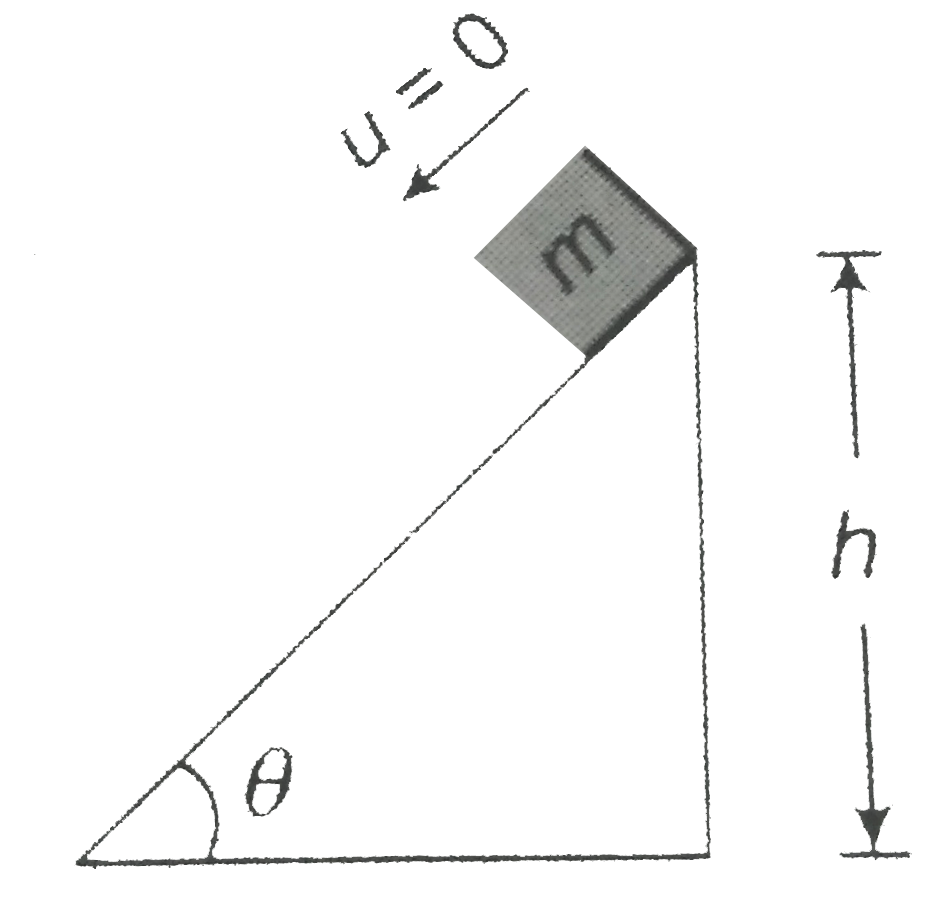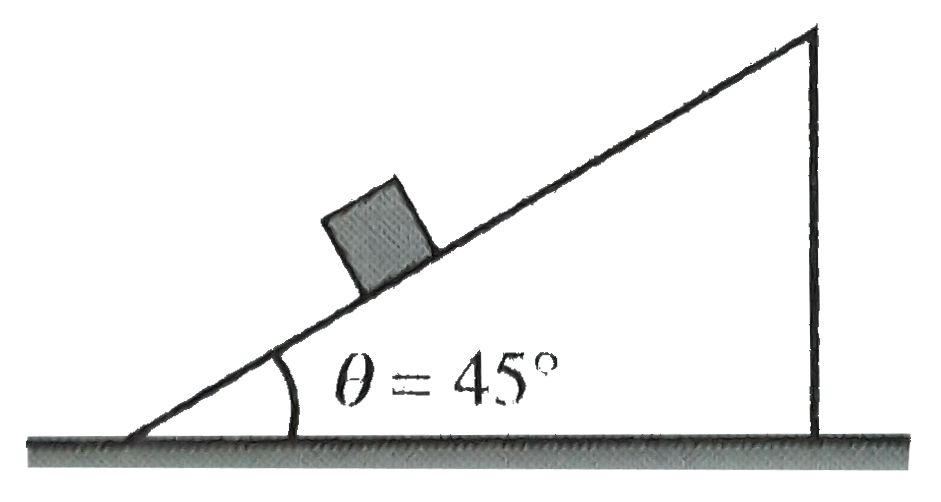A block of mass m is placed on a smooth inclined plane of inclination θ with the horizontal. The force exerted by the plane on the block has a magnitude
mg
mgcosθ
mgcosθ
mgtanθ
The correct Answer is:C
To find the force exerted by the inclined plane on the block, we need to analyze the forces acting on the block. Here’s a step-by-step solution:
Step 1: Identify the Forces Acting on the Block
The block of mass m experiences two main forces:
1. The gravitational force →Fg=m→g acting vertically downward.
2. The normal force →N exerted by the inclined plane acting perpendicular to the surface of the plane.
Step 2: Resolve the Gravitational Force
The gravitational force can be resolved into two components relative to the inclined plane:
- A component acting perpendicular to the inclined plane: F⊥=mgcosθ
- A component acting parallel to the inclined plane: F∥=mgsinθ
Step 3: Analyze the Motion of the Block
Since the block is placed on a smooth inclined plane, it is not accelerating. This implies that the net force acting on the block is zero. Therefore, the normal force must balance the perpendicular component of the gravitational force.
Step 4: Set Up the Equation for the Normal Force
The normal force N exerted by the inclined plane must equal the perpendicular component of the gravitational force:
N=mgcosθ
Conclusion
Thus, the magnitude of the force exerted by the inclined plane on the block is:
N=mgcosθ
The block of mass m experiences two main forces:
1. The gravitational force →Fg=m→g acting vertically downward.
2. The normal force →N exerted by the inclined plane acting perpendicular to the surface of the plane.
The gravitational force can be resolved into two components relative to the inclined plane:
- A component acting perpendicular to the inclined plane: F⊥=mgcosθ
- A component acting parallel to the inclined plane: F∥=mgsinθ
Since the block is placed on a smooth inclined plane, it is not accelerating. This implies that the net force acting on the block is zero. Therefore, the normal force must balance the perpendicular component of the gravitational force.
The normal force N exerted by the inclined plane must equal the perpendicular component of the gravitational force:
N=mgcosθ
Thus, the magnitude of the force exerted by the inclined plane on the block is:
N=mgcosθ
Topper's Solved these Questions
- NEWTON'S LAWS OF MOTIONBOOK - HC VERMACHAPTER - NEWTON'S LAWS OF MOTIONEXERCISE - Objective 2
9 Videos
- NEWTON'S LAWS OF MOTIONBOOK - HC VERMACHAPTER - NEWTON'S LAWS OF MOTIONEXERCISE - Exercises
42 Videos
- NEWTON'S LAWS OF MOTIONBOOK - HC VERMACHAPTER - NEWTON'S LAWS OF MOTIONEXERCISE - Short Answer
17 Videos
- LAWS OF THERMODYNAMICSBOOK - HC VERMACHAPTER - LAWS OF THERMODYNAMICSEXERCISE - Short Answer
15 Videos
- PHYSICS AND MATHEMATICSBOOK - HC VERMACHAPTER - PHYSICS AND MATHEMATICSEXERCISE - Exercises
34 Videos
Similar Questions
A block is released on an smooth inclined plane of inclination θ. After how much time it reaches to the bottom of the plane?

View SolutionA block of weight 1 N rests on a inclined plane of inclination θ with the horizontal. The coefficient of friction between the block and the inclined plane is μ. The minimum force that has to be applied parallel to the inclined plane to make the body just move up the plane is
View Solution
Knowledge Check
Statement I: A block of mass m is placed on a smooth inclined plane of inclinaton θ with the horizontal. The force exerted by the plane on the block has a magnitude mgcosθ.
Statement II: Normal reaction always acts perpendicular to the contact surface.AStatement I is true, statement II is true, Statement II is the correct explanation for statement I.BStatemet I is true, Statement II is true , Statement II is NOT the correct explanation for Statement ICStatement I is True, Statement II is False.DStatement I is False, Statement II is trueA block of mass m is placed on a rough inclined plane of inclination θ kept on the floor of the lift. The coefficient of friction between the block and the inclined plane is μ. With what acceleration will the block slide down the inclined plane when the lift falls freely ?
AZeroBgsinθ−μgcosθCgsinθ−μgcosθDNone of theseA block of mass m is placed on a rough plane inclined at an angle θ with the horizontal. The coefficient of friction between the block and inclined plane is μ . Ifθ<tan−1(μ) , then net contact force exerted by the plane on the block is :
Amg cos θBmgCmg sin θDNone of these
A block of mass m=3kg slides on a rough inclined plane of cofficient of friction 0.2 Find the resultant force offered by the plane on the block

View SolutionA block mass 'm' is placed on a frictionless inclined plane of inclination θ with horizontal. The inclined plane is accelerated horizontally so that the block does not slide down. In this situation vertical force exerted by the inclined plane on the block is:
View SolutionA block of mas m begins to slide down on an inclined plane of inclination θ. The force of friction will be
View SolutionA block of mass m is placed at rest on an inclination θ to the horizontal.If the coefficient of friction between the block and the plane is μ, then the total force the inclined plane exerts on the block is
View SolutionA block of mass m slides down an inclined plane which makes an angle θ with the horizontal. The coefficient of friction between the block and the plane is μ. The force exerted by the block on the plane is
View Solution
